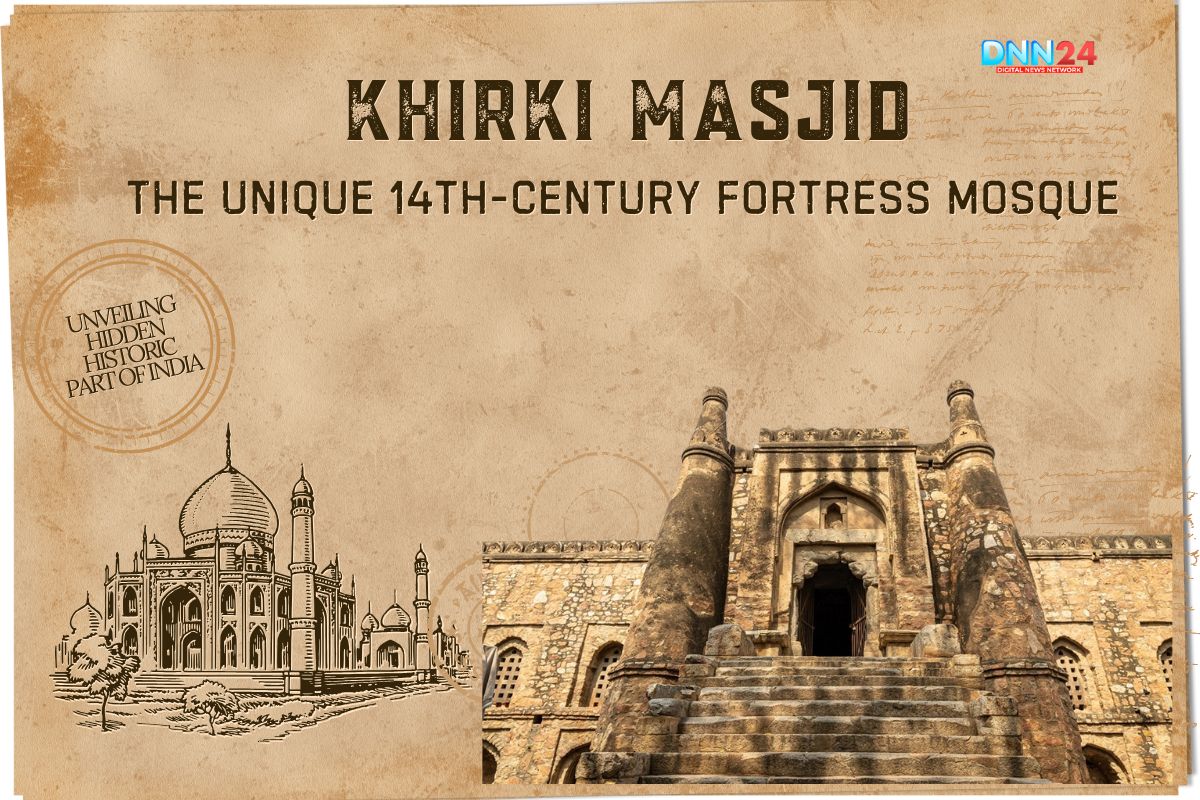Delhi is a city of contrasts. On one hand, it dazzles with glittering malls, sprawling flyovers, and buzzing marketplaces. On the other hand, it quietly guards centuries-old monuments, often hidden in plain sight. Among these, Khirki Masjid, popularly known as the “Mosque of Windows” is perhaps the most intriguing.
Hidden inside the compact lanes of Khirki Village in South Delhi, directly opposite the high-end Select Citywalk Mall, this 14th-century mosque doesn’t immediately reveal its purpose. Unlike grand mosques with minarets, open courtyards, and delicate ornamentation, Khirki Masjid resembles a fortress. Its high rubble masonry walls, bastion-like corners, and small domes perfectly lined make it look like a stronghold rather than a religious sanctuary.
The name “Khirki” means window in Hindi, yet ironically, this mosque has few traditional windows. Instead, it has intricately carved stone lattice screens (jalis) that filter sunlight and air into its prayer halls. The atmosphere inside is striking cool, shadowy, and deeply peaceful, contrasting sharply with the chaos of traffic and markets outside.
To step inside Khirki Masjid is to travel back seven centuries, into the time of Delhi’s Tughlaq rulers. It is not just a monument but a silent storyteller of an era marked by strength, faith, and innovation.
A Walk Back in Time: The Builder and His Era
To truly appreciate Khirki Masjid, one must journey back to the Tughlaq dynasty, when Delhi emerged as a centre of Islamic architecture. The mosque was commissioned by Khan-i-Jahan Junan Shah, the prime minister of Sultan Feroz Shah Tughlaq (who ruled between 1351 and 1388 CE).
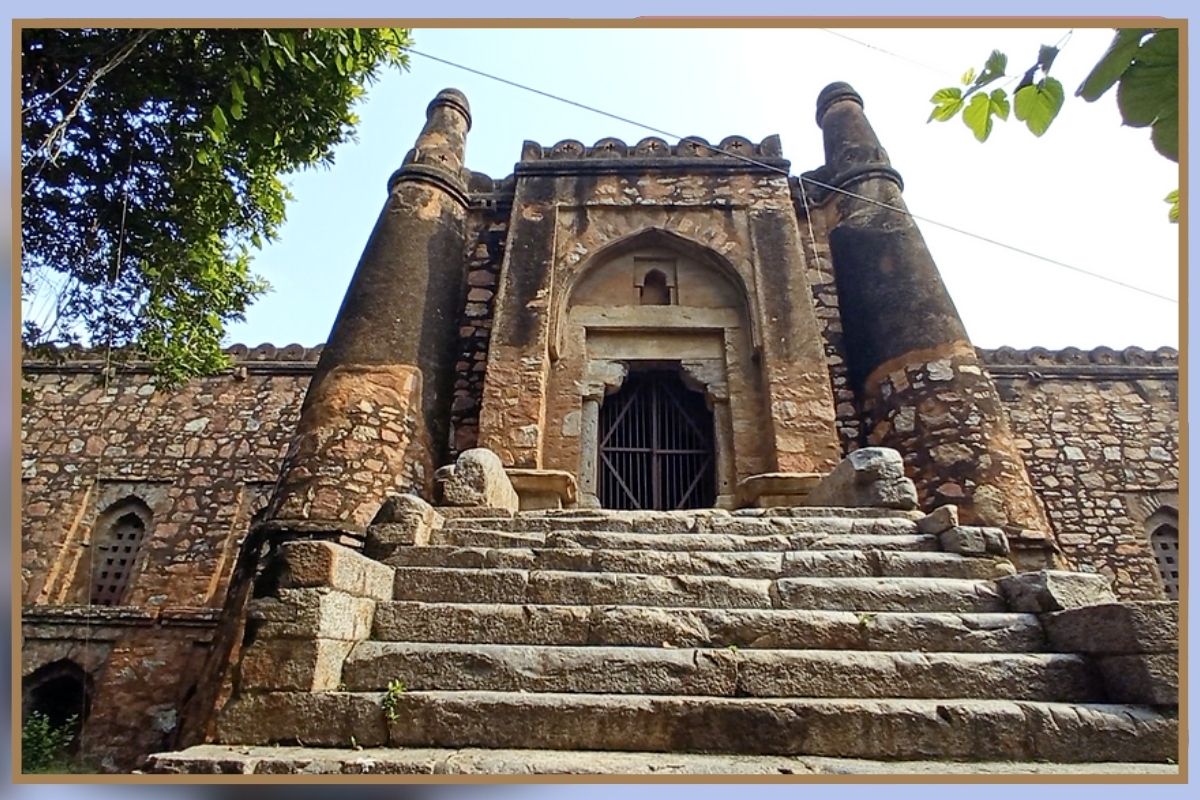
Unlike many court officials of his era, Junan Shah wasn’t just a statesman. He was a passionate builder and visionary, leaving behind several striking structures that still dot Delhi’s landscape. Where others sought glory in battles, Junan Shah sought immortality through stone.
The Tughlaqs were famous for their fortress-like style of architecture solid, unadorned, and practical. They preferred quartzite stone and rubble masonry to the marble and red sandstone that later Mughals would popularise. Their structures were less about grandeur and more about durability and symbolism.
Khirki Masjid was constructed between 1351 and 1354 CE at the edge of Jahanpanah, one of the medieval cities of Delhi founded by Muhammad bin Tughlaq. The mosque’s unique form, a fortified square structure with four inner courtyards and a grid of small domes was unlike any before.
For Junan Shah, this wasn’t just another religious site. It was a bold experiment in combining faith, function, and defence. Centuries later, residents of Khirki still call it their “qila” (fortress), a testament to the powerful impression left by its design.
A Fortress Like No Other: Unique Architecture
At first glance, Khirki Masjid looks more like a medieval fort than a mosque. Its architecture is a fascinating blend of religious functionality and military robustness, reflecting the uncertainty of its times.
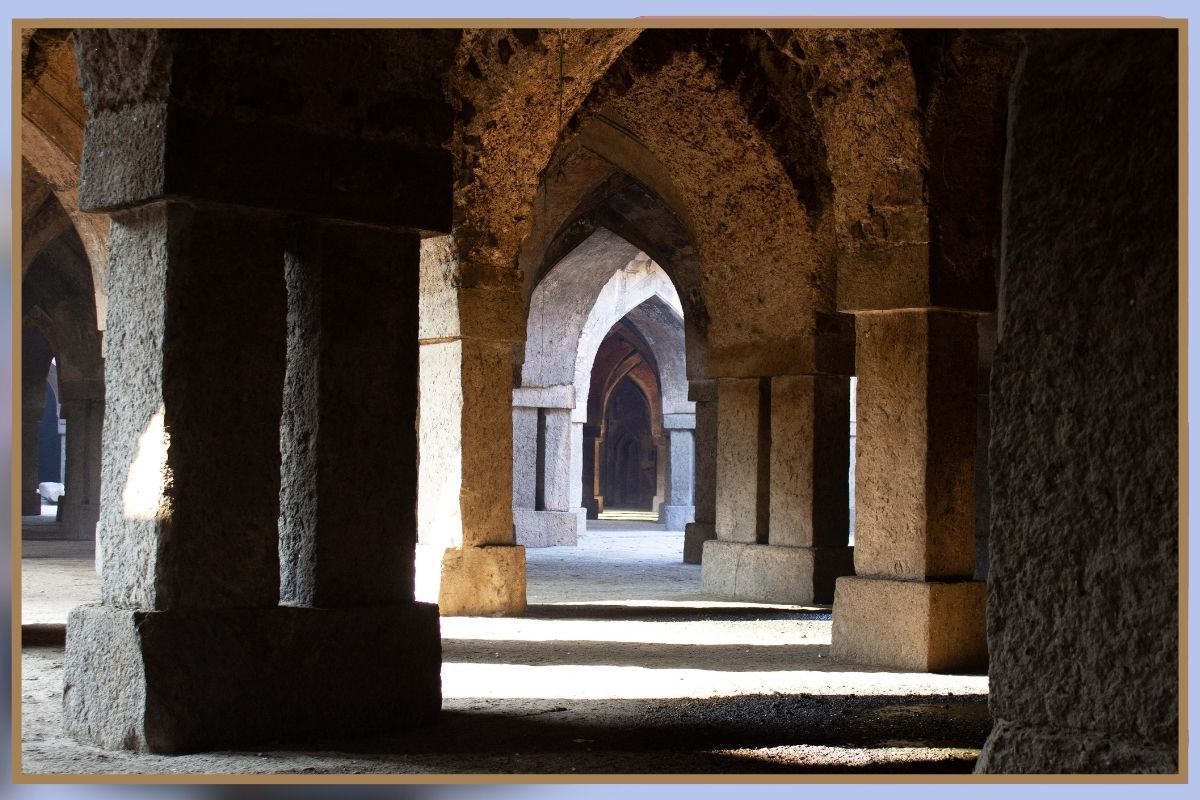
Key Architectural Features
- Square Layout: The mosque is almost a perfect square, measuring 52m x 52m, built on a raised platform about 3 meters high.
- Four Gateways: Entrances on the north, south, east, and west reinforce the fortress-like vibe.
- 81 Small Domes: Instead of a single grand dome, the flat roof is crowned with rows of small domes, arranged in a neat grid.
- Four Courtyards: The covered prayer hall is punctuated by four small open courtyards, allowing light and ventilation.
- Stone Lattice Windows (Khirki): The mosque’s name comes from these exquisite jalis, which let in filtered light while keeping the interiors cool.
Unlike most mosques, which feature wide, open courtyards, Khirki is almost entirely roofed. This unusual decision has sparked much debate among historians. Some argue it was a climate-responsive innovation, shielding worshippers from Delhi’s scorching summers and dust storms. Others see it as a defensive measure, designed to protect against possible attacks.
The use of red sandstone and grey quartzite gives the walls a rugged charm, with minimal decoration. Instead of intricate carvings or inlays, the emphasis is on sheer strength and geometric order a signature of Tughlaq design.
From the outside, it feels austere and closed. But inside, the interplay of light and shadow through the khirkis creates a serene atmosphere that lingers in memory long after one leaves.
The Hidden Gem: Experience Amidst Urban Sprawl
One of the most fascinating things about Khirki Masjid is its location. Nestled inside the congested residential lanes of Khirki Village, the mosque is almost invisible to passersby. Unless you know exactly where to look, you might never find it.
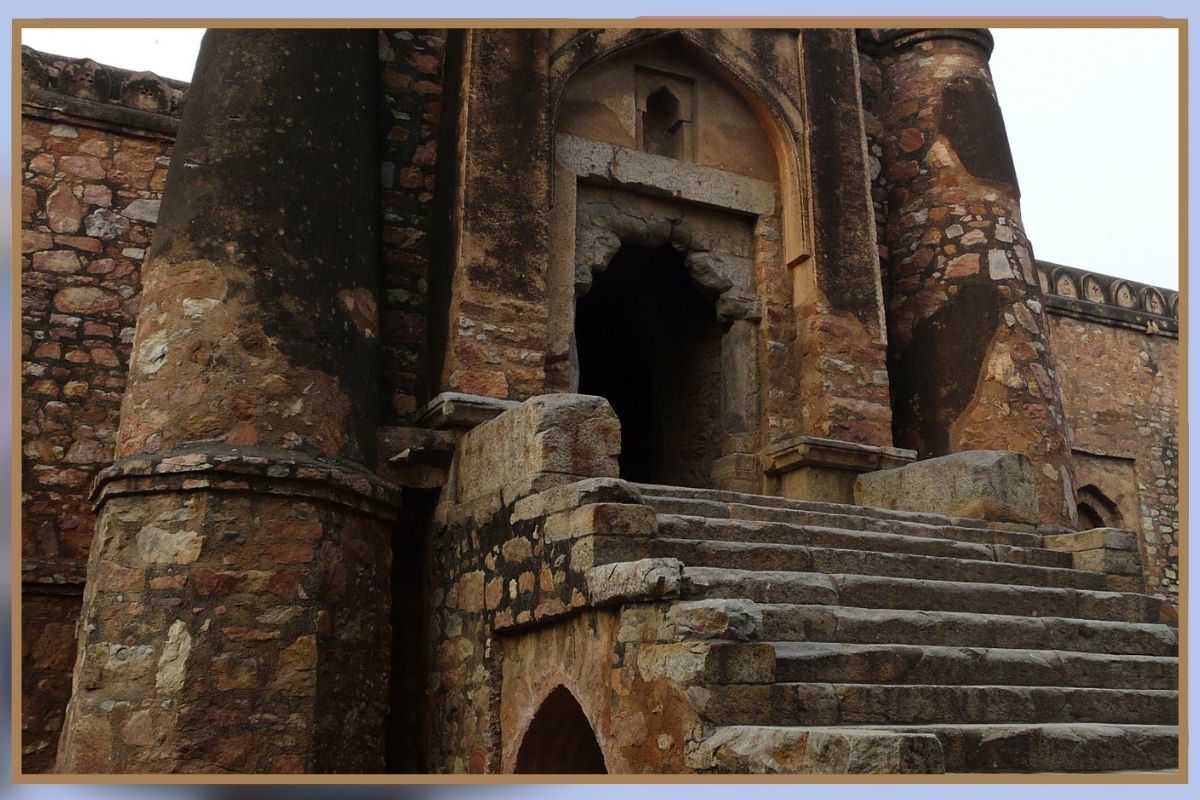
Ironically, this centuries-old monument sits just across one of Delhi’s most upscale malls, Select Citywalk. To reach it, visitors must navigate narrow alleys lined with small shops, tea stalls, and houses a stark contrast to the monumental structure that suddenly appears at the end of the lane.
A World Away from the Chaos
Stepping inside Khirki Masjid feels like entering another world. The honking of cars, chatter of markets, and blaring music from malls vanish. Instead, there’s only the soft flutter of birds, whispers of the wind through lattice windows, and the crunch of footsteps on old stone floors.
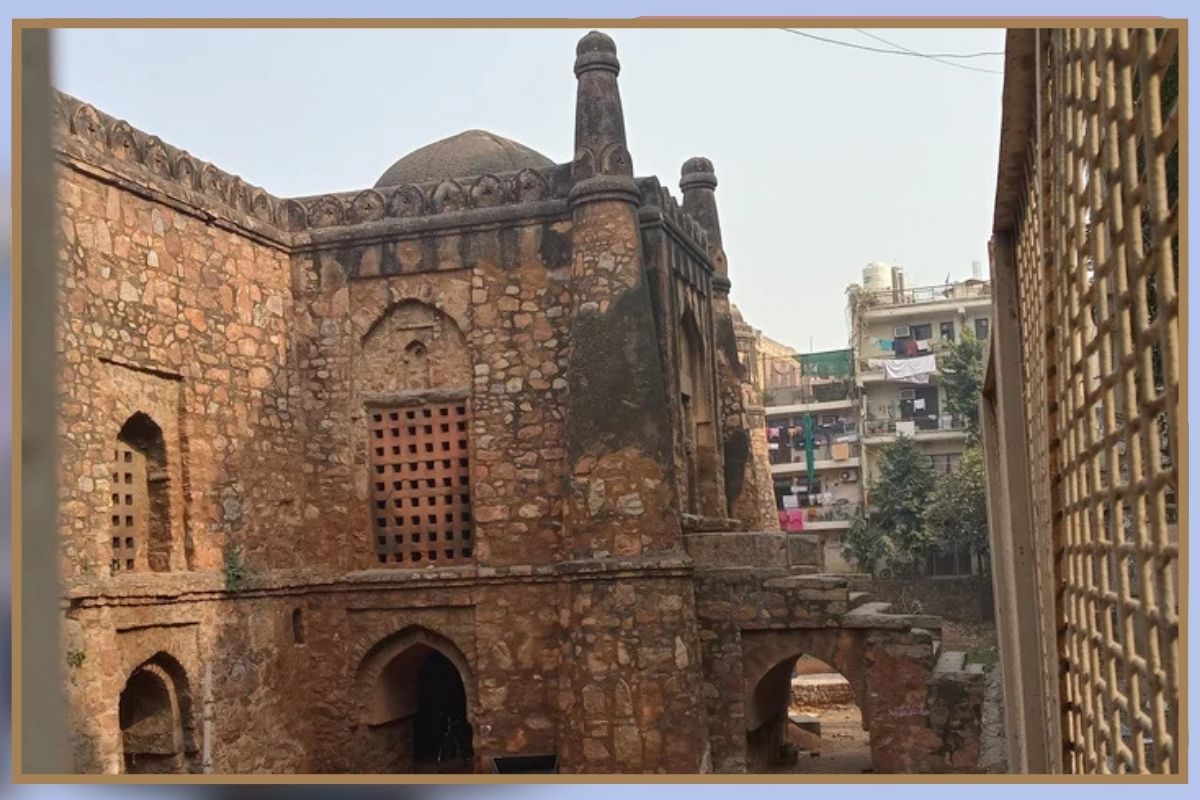
For residents, the mosque has always been more than a monument. Children climb its steps to play hide-and-seek, elders sit in its shade during hot afternoons, and families treat it as an inseparable part of their neighbourhood identity. Many still call it their “qila” (fort) rather than a mosque.
Unlike popular tourist sites such as Jama Masjid or Qutub Minar, Khirki is rarely crowded. There are no ticket counters, souvenir shops, or guides—just stone, silence, and history. Some see this as a missed opportunity for conservation and awareness. Others believe its seclusion is its blessing, protecting it from overexposure and commercialisation.
Either way, visiting Khirki Masjid feels like discovering a secret chapter of Delhi that rewards only the curious.
The Legacy: Significance, Challenges, and Reflections
Khirki Masjid isn’t just another monument. It is unique in Indian Islamic architecture as one of the few mosques fully roofed with domes, a design rarely replicated in the subcontinent.
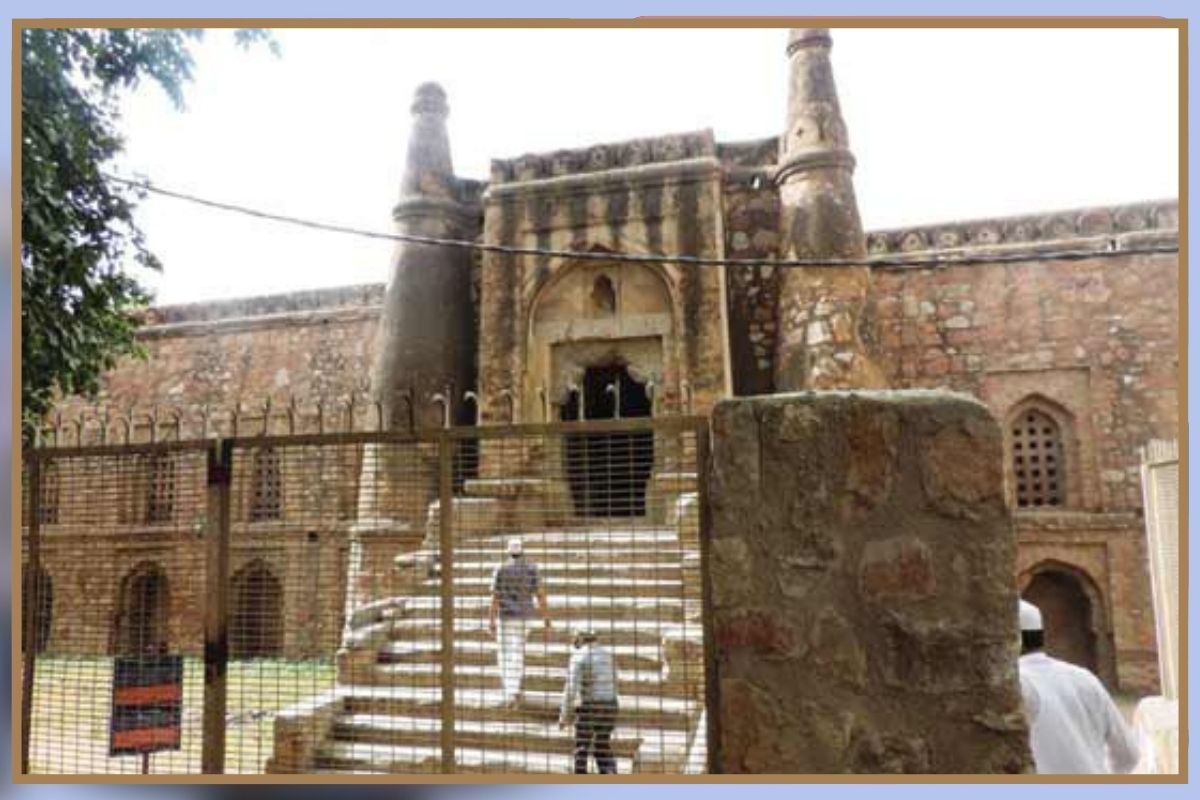
Architectural Legacy
- It represents the transition between the austere, fortress-like Tughlaq style and the later ornate Mughal style.
- Its combination of stone jalis, enclosed courtyards, and grid domes makes it one of the most experimental mosques in medieval India.
- The mosque also showcases the fusion of Islamic and indigenous Indian techniques, with arched and trabeated (beam-supported) constructions.
Modern Challenges
However, its survival is under threat.
- Urban Encroachment: Modern buildings tightly surround the mosque, leaving little breathing space.
- Neglect: While the Archaeological Survey of India (ASI) manages the site, its hidden location often means slower conservation efforts.
- Weathering: Centuries of exposure have worn down stones, and unchecked vegetation growth causes further damage.
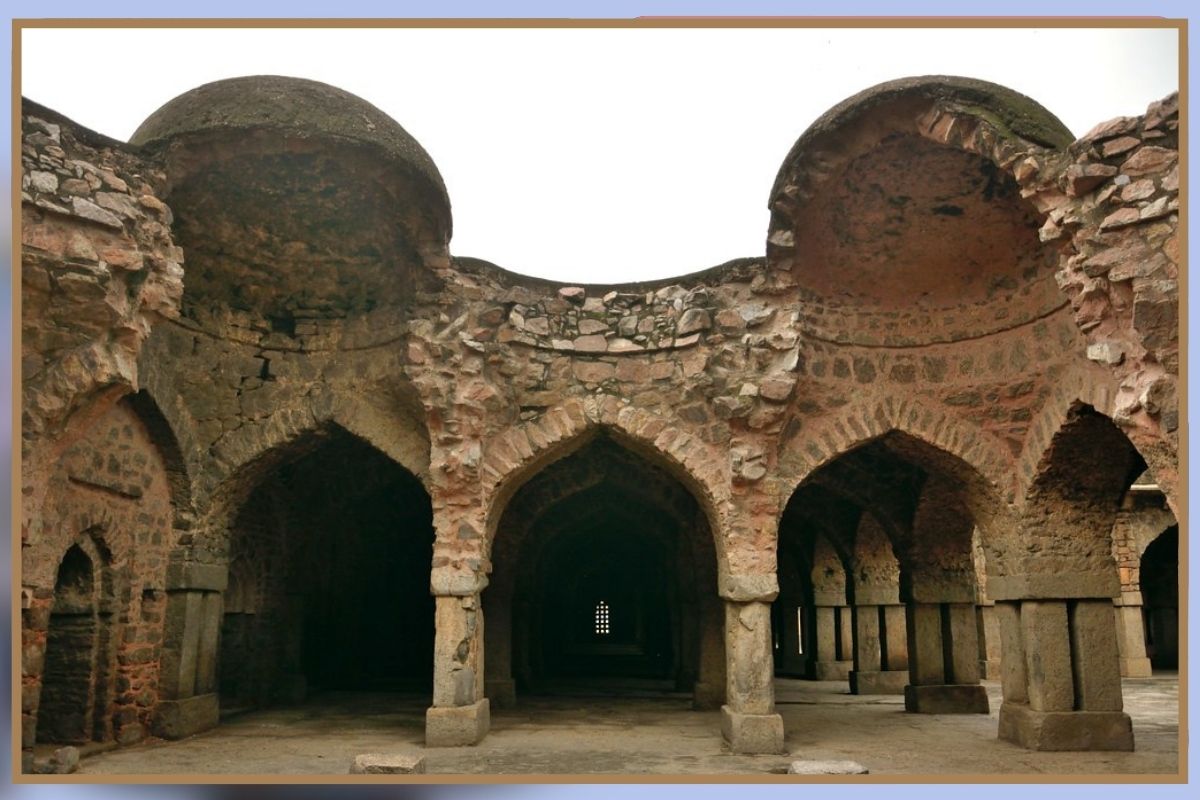
Cultural Importance
Despite these challenges, Khirki Masjid remains a living monument. It connects Delhi’s past with its present, reminding residents of their city’s strength and resilience. For heritage lovers, it offers not just architectural beauty but also a space for reflection an oasis of calm in one of the busiest parts of Delhi.
For anyone curious about Delhi’s soul, Khirki Masjid is more than a monument. It’s a time capsule, echoing centuries of prayers, resilience, and forgotten stories.
Defensive Features: Why Khirki Masjid Resembles a Fortress
What makes Khirki Masjid so unique is its fortress-like appearance. Unlike open mosques, it incorporates several defensive features, including:
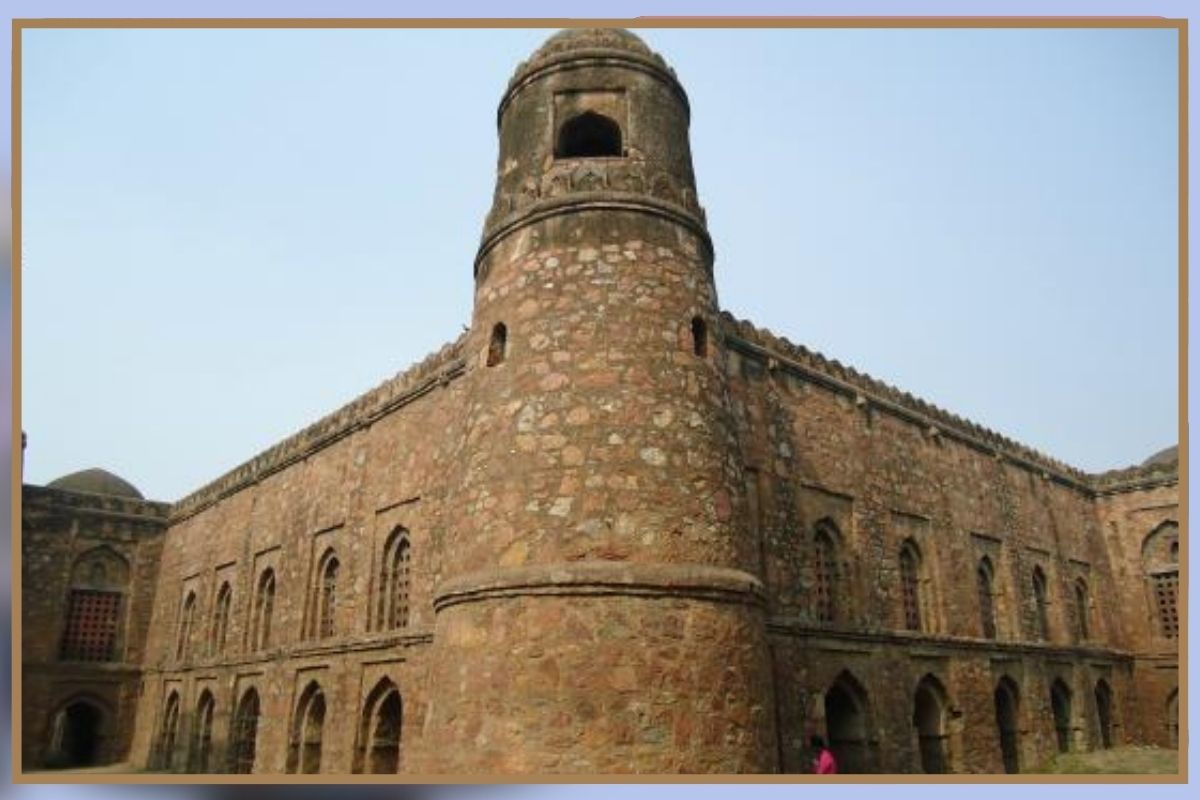
- Thick Rubble Masonry Walls – built for strength and durability.
- Corner Bastions (Turrets) – resembling fort towers used for lookout.
- Raised Platform – elevating the mosque 3 meters above ground for security.
- Limited Entrances – only three or four gateways restrict access.
- Latticed Jali Windows – allowing ventilation but preventing easy intrusion.
- Sloping Walls and Parapets – typical of Tughlaq-era fortifications against invasions.
These features blur the line between mosque and fort, reflecting the insecurity of 14th-century Delhi, often threatened by external invasions.
Unique Tughlaq Elements That Set Khirki Apart
Khirki Masjid is distinct among Delhi’s mosques because of its innovative Tughlaq elements:
- Entirely Roofed Structure: Unlike open-courtyard mosques, almost the entire mosque is covered.
- Fortress Plan: Raised square Platform, thick walls, corner bastions.
- Khirki (Window) Jalis: Unique perforated stone screens that define their name and character.
- Blending of Styles: Fusion of Islamic arches with indigenous Indian trabeated designs.
- Multiple Small Domes: 81 domes in a grid, instead of one large dome.
- Minimal Ornamentation: Plain surfaces with functionality emphasised over decoration.
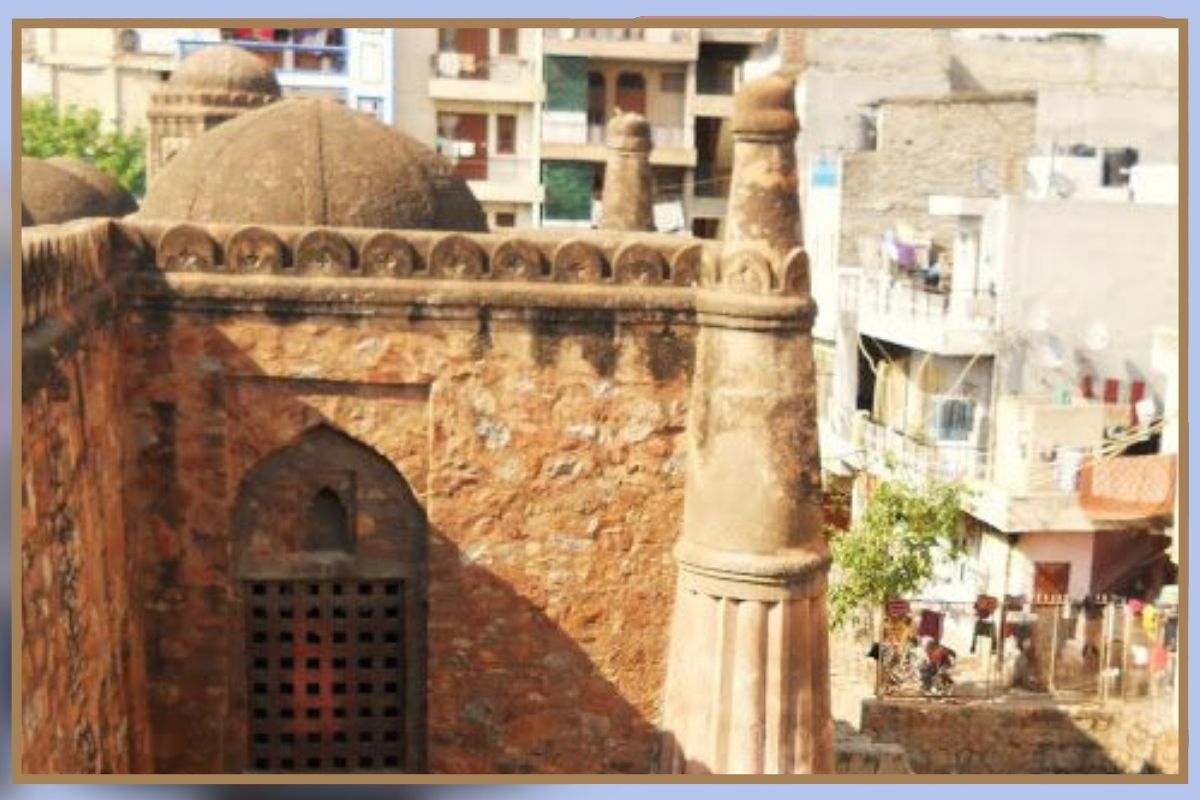
These innovations make Khirki Masjid a rare architectural experiment that has no parallel in Delhi or elsewhere in North India.
How the 81 Small Domes Reflect Tughlaq Design Principles
Perhaps the most striking feature of Khirki Masjid is its 81 domes, spread out in neat symmetry across its roof. These domes perfectly capture the Tughlaq philosophy of architecture.
- Practical Utility: Instead of one massive dome, the small domes evenly shelter the prayer hall from harsh sun and rain.
- Structural Ingenuity: Supported by a grid of pillars and arches, they showcase advanced engineering.
- Geometric Order: The arrangement reflects the Tughlaq’s love for mathematical precision.
- Light and Air: Combined with courtyards, the domes help circulate air and bring in filtered light.
- Fortress Aesthetic: The clustered domes reinforce the mosque’s fortress-like identity.
- Innovation: This roofing system was highly unusual in India and reflects the dynasty’s willingness to experiment.
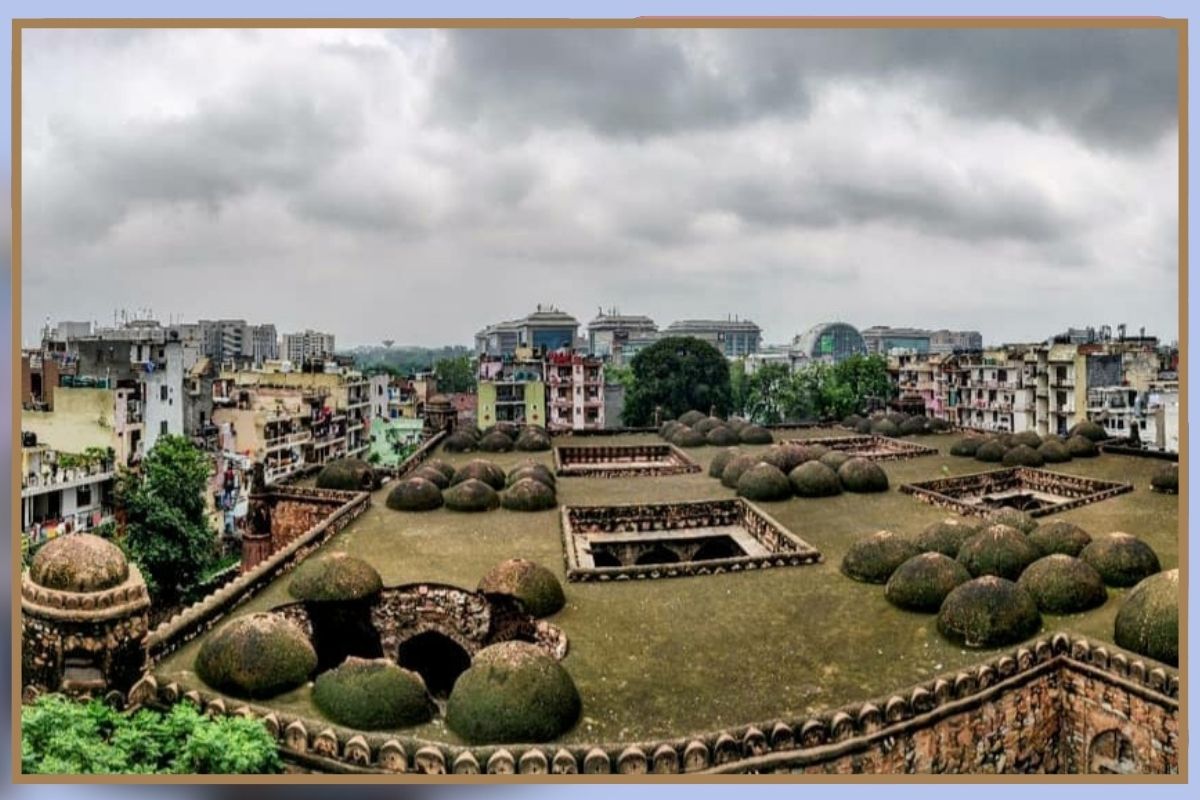
The 81 domes thus serve as both a functional solution and a powerful visual statement, making Khirki Masjid one of the most technically advanced mosques of its time.
Delhi’s Hidden Fortress Mosque of the Tughlaq Era
Khirki Masjid is not just another forgotten ruin but a masterpiece of resilience and experimentation. Built nearly 700 years ago, it fascinates historians, architects, and curious travellers with its fortress-like structure, grid of domes, and mystical play of light through stone windows.
Amidst Delhi’s modern malls and traffic jams, it survives as a silent storyteller, reminding us of a time when architecture was about faith and defence. Its challenges remain, but so does its soul; a living reminder that history doesn’t vanish; it waits to be rediscovered.
For anyone seeking to connect with the layered past, Khirki Masjid is a must-visit. Step inside, breathe the cool air, listen to the silence, and let the centuries whisper their stories.
Also Read: Jamali Kamali Mosque and Tomb: Sufi Poetry, Mughal Architecture, and Haunted Tales
You can connect with DNN24 on Facebook, Twitter, and Instagram and subscribe to our YouTube channel.

